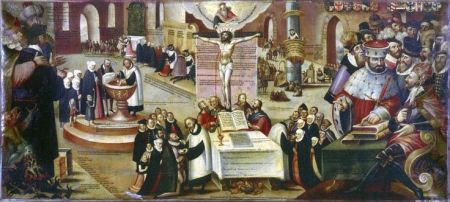
Video of Vespers is here. The sermon begins around the 22:25 mark.
Continue reading
On the liturgy, Preparation through Gloria in Excelsis.
[meant to have video; no power cord. meant to press record; forgot.]
In the Name of the Father and of the Son and of the Holy Spirit. Amen.
I think it was Jaroslav Pelikan who said something to the effect that traditionalism is the dead faith of the living, while tradition is the living faith of the dead. Traditionalism is doing something simply because it was always done; tradition is doing what has been handed down to us, because it has become ours. Traditionalism very often leads to the opposite error: doing things simply because they aren’t what we’ve always done, always doing what is new and contemporary. But the fact that something is “contemporary” is not a reason to do anything. All it means is that it is being done now, at the same time that we are alive. What matters is not when something was produced, or when it was made, but what it is and what it does. A high school history teacher of mine once asked a class of sophomores, “What makes something a classic?” I don’t remember all the answers that were given, but I remember one answer: Something that stands the test of time. There are lots of things that are made and done and written and heard, but most are forgotten, most are forgettable, most are not able to stand the brutal test of history as it shifts, changes, and moves through place and time. One thing that has stood the test of time, even as it has developed and moved through very different languages, cultures, and places, is the liturgy of the Church. Granted, the Church has not had only one liturgy in her history, but it is astounding to consider how much the liturgies of the Church have in common across time and space. For the next few weeks, I’m going “preach through the liturgy” as we dig deeper and hear better this great gift as it has been handed down to us for hundreds, even thousands, of years.